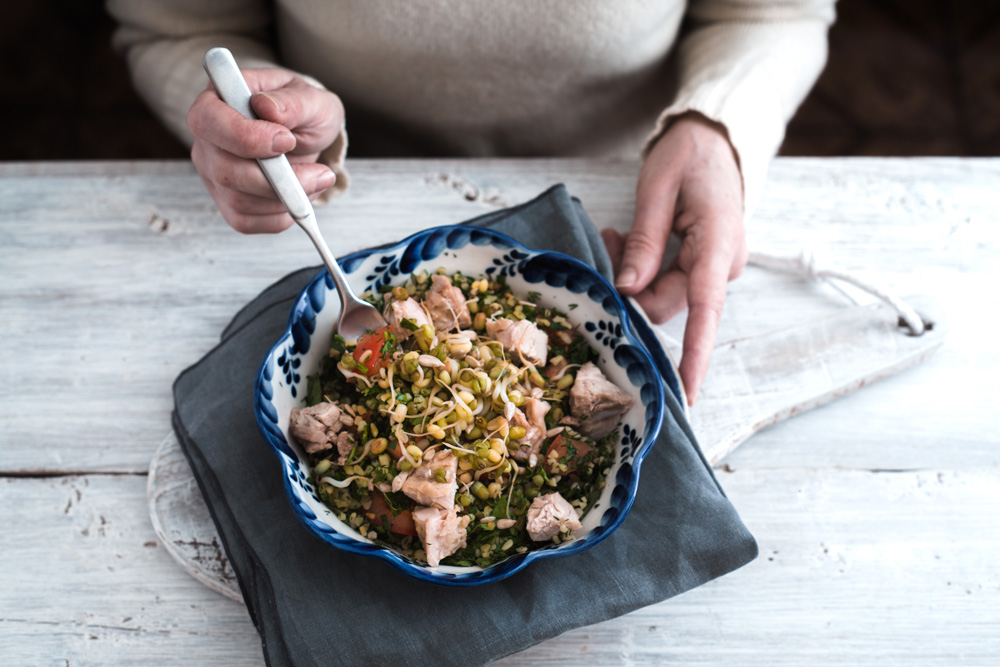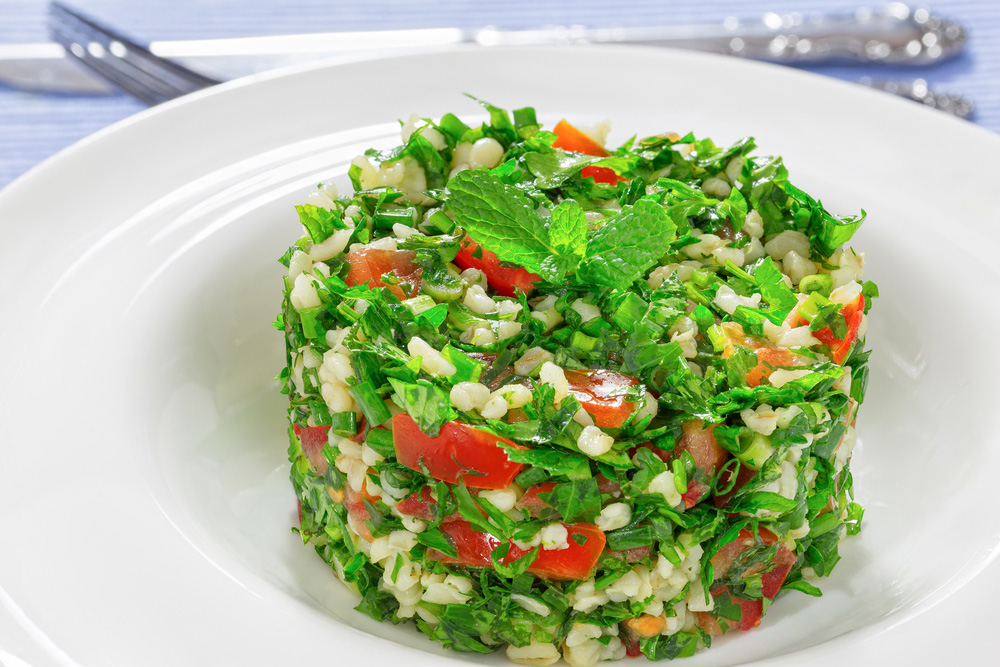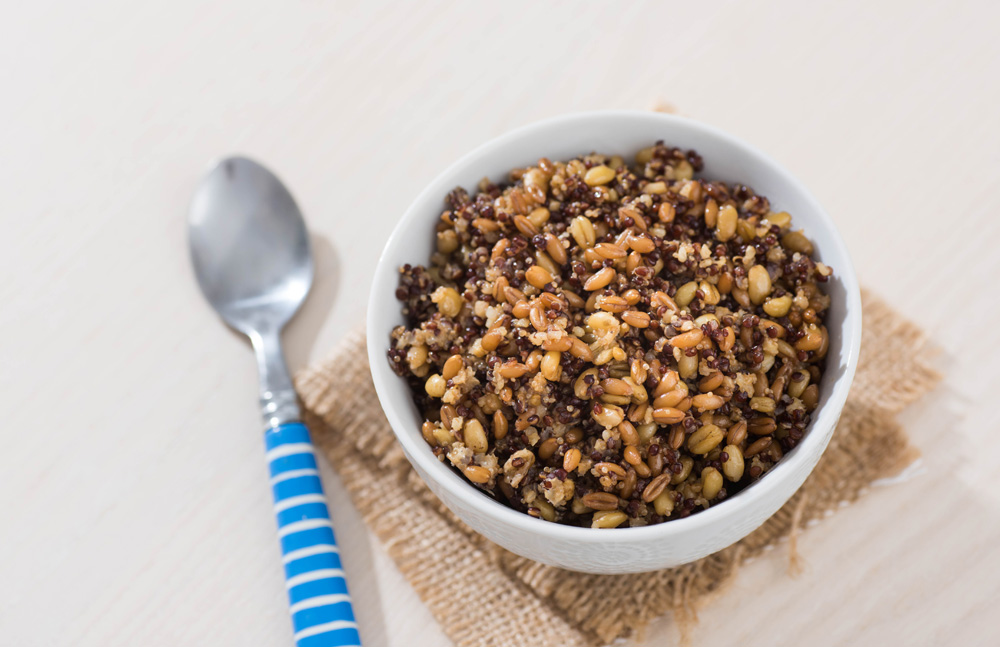
Freekeh, which has been part of the food culture in Middle Eastern countries like Jordan, Egypt, Lebanon and Syria for centuries, is now on health-conscious foodies’ shopping lists all over the world. That’s probably partly due to nods of approval from stars like Oprah Winfrey. Chefs are also helping make freekeh trendy, with dishes popping up on menus in restaurants everywhere.
Touted as the new quinoa, the supergrain actually has more protein, less calories and double the amount of fibre than its superfood challenger. There’s one caveat, however, freekeh, which is also called frik or farik, is not gluten-free as it is made from durum wheat. The wheat is harvested while young, tender and green. After the straw and chaff are burned, the kernels, which contain gluten, are then parched, roasted, dried and rubbed.
It’s loaded with All the Good Stuff
As it’s harvested at an earlier stage, studies in places like Australia, where freekeh is popular, have shown that the ancient grain contains higher levels of fibre, protein and certain minerals than more mature, typically processed wheat. There’s a healthy four grams of fibre and eight grams of protein in a serving (one-fourth cup, raw) of freekeh, leading many vegetarians and vegans to use it as a source for the latter. Another reason freekeh is popular with vegetarians and vegans is that it contains plenty of zinc. Plus, the wonder grain is high in iron, calcium and potassium.

Some Benefits Of Freekeh
Aids weight control: As well as being high in protein and fibre (three times more fibre than brown rice) freekeh contains resistant starch, all providing more satiety and helping you feel fuller, longer. Additionally, it is nearly fat free, with each serving containing about 130 calories.
Diabetes-friendly: Freekeh can offer diabetics, or anyone trying to keep their blood sugar steady, a healthy option. That’s because it has a low position on the glycemic index and is ranked in at 43.
Good for the eyes: According to evidence, freekeh contains the carotenoid lutein, which positively affects ocular development throughout life and lowers the risk of us developing many age-related eye diseases. The green grain also contains zeaxanthin, another antioxidant and carotenoid that helps prevent the macular degeneration that causes vision changes.
Helps digestive system: Freekeh comes with prebiotics, which can help the digestive system work efficiently. Different to beneficial live bacteria and yeasts, probiotics, prebiotic fibre is fermented in the large colon, helping feed beneficial bacteria colonies (including probiotic bacteria). This helps to increase the number of desirable bacteria in our digestive systems that are associated with staying healthy.
Builds strong muscles: The grain contains glutamic acid, which is very popular with athletes and bodybuilders as it helps synethesise glutamine, a naturally occurring essential amino acid that helps repair and build muscle. Glutamic acid also has the power to help encourage endurance and strength.

How Can You Use Freekeh?
Similar in texture to another wholegrain, burgul wheat, freekeh can be found whole or cracked, the latter being far more popular as cooking time is reduced while you still benefit from the same nutritional content. And with its rich, nutty and slightly smoky flavour, freekeh works beautifully in lots of dishes, helping to add some variety to your diet. If you’re a salad freak, it’s perfect for the grain-based ones that are common in Greek, Italian, and other Mediterranean cuisines as you can sub it in for rice, burgul wheat, quinoa, faro and other hearty grains. It’s also an excellent addition to soups, similarly to how you can use barley in a nourishing vegetable soup, casseroles, stir-fries, risottos, stews and pilafs. It can also be used to stuff poultry and complement vegetable dishes. Basically, if you can do it with rice, you’ll most probably be able to do it with freekeh (although we’re not quite sure how freekeh sushi would taste)! Plus, freekeh, which you can find spelt freekah or frikeh, can be enjoyed as breakfast. You can try it as a hot cereal in place of oatmeal or as a parfait with some yogurt and fruit, instead of granola or oats.

Did You Know?
Freekeh was reportedly discovered by coincidence when Eastern Mediterranean soldiers tried to ruin the crop by burning wheat fields. When locals tried to save what they could, they found delicious green grains while removing the burnt shells.
















